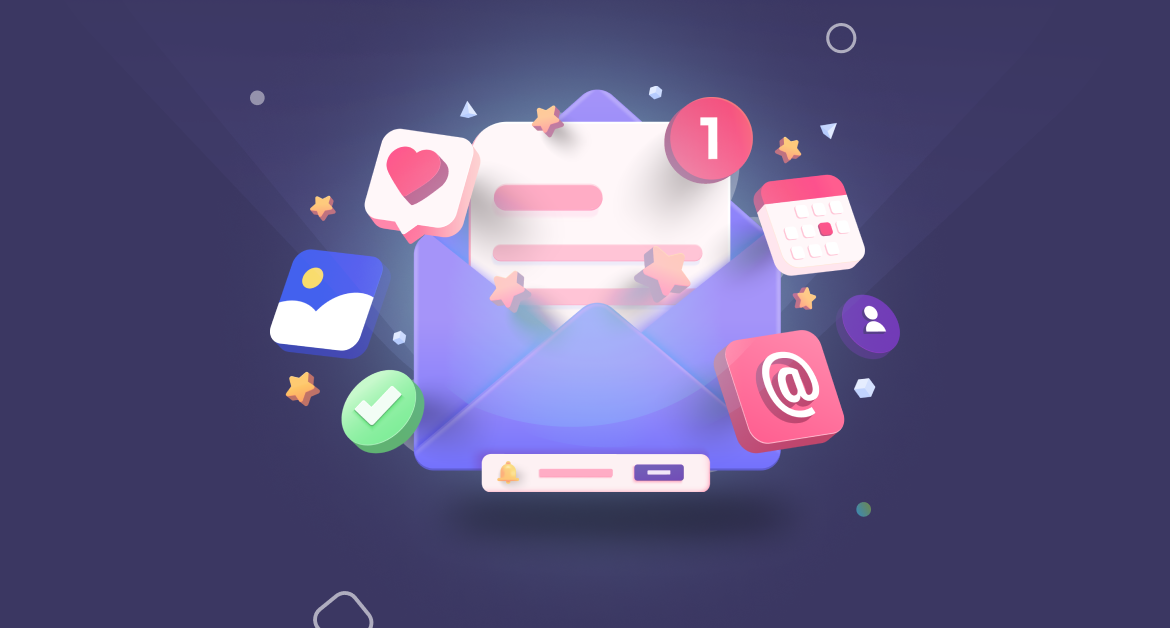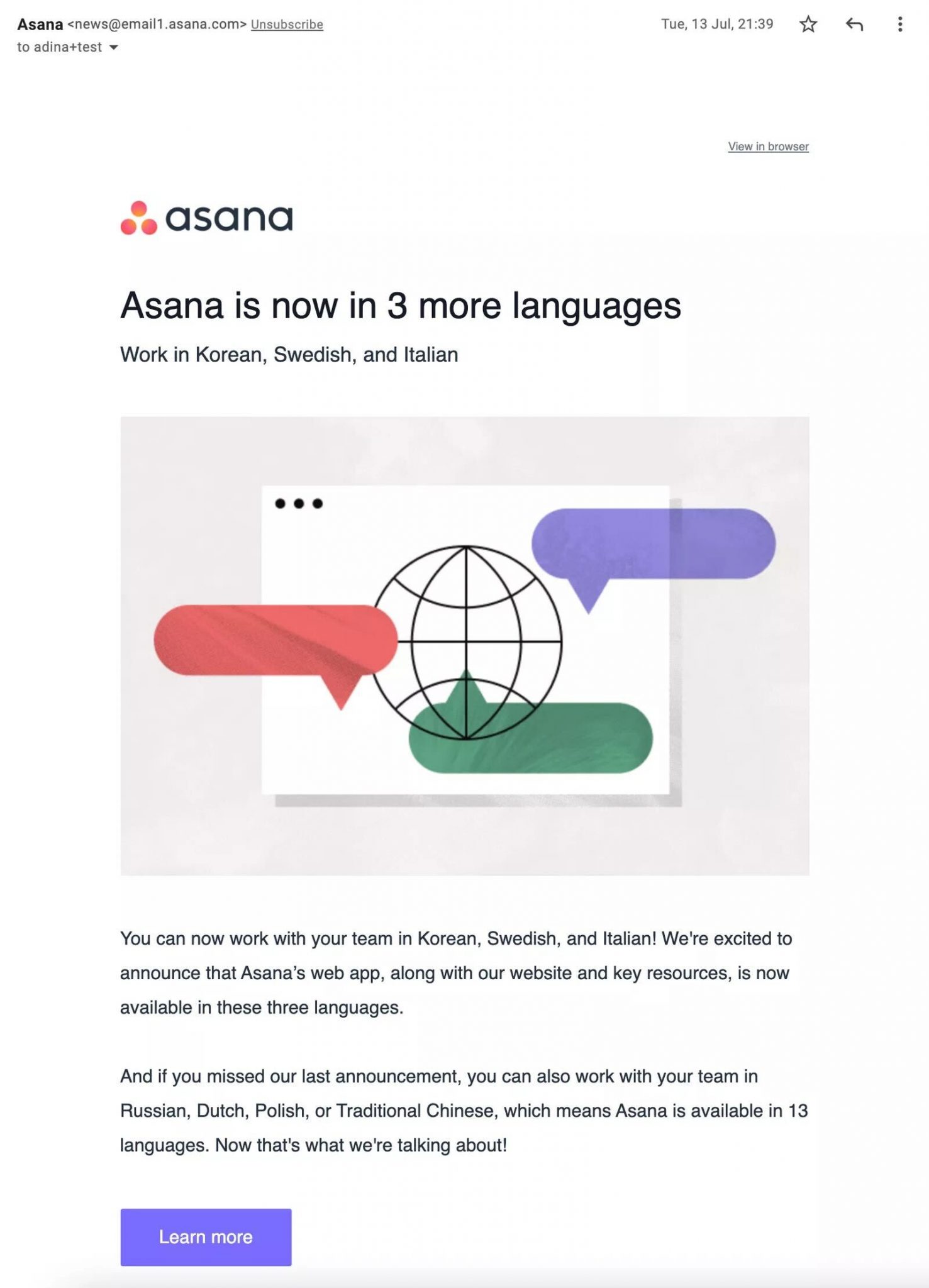
Most Effective Email Types Used In Email Marketing Campaigns
Email campaigns are a great opportunity to remind customers of your brand. The more often customers see emails related to your brand in their inboxes, the more likely they are to choose your business during their product search. Do not think that you can create the brand image you desire in the minds of the customer with only sales-oriented e-mails. Instead, focus on combining your sales emails with educational content.
In this article, we will share email ideas to use in your marketing campaigns. Users expect to receive valuable content from your brand by subscribing to your mailing list. Thanks to these ideas, you will be able to interact with your target audience and increase customer interaction and loyalty as well as sales.
Welcome Emails
The first impression, which is the key point of communication, is actually a kind of last impression. Welcome emails are the first campaign a brand sends to new customers. The purpose of these emails is to warmly welcome the customer, introduce your team or products, and tell subscribers about the benefits of working with your company. You can also include introductory guides or video instructions in your emails that will make the customer’s job easier.
Newsletters
Newsletters are weekly or monthly edited versions of high-quality content. The purpose of this campaign is to increase your interaction with your readers. In these emails, you can use not only your own content, but also materials from other brands. Keep in mind that you’ll have to work through tons of articles to find the best material. Such emails show how expert you are in your field, build trust in your brand, and make you perceived as an authority.
Event Invitation Emails
Marketers send these messages to announce an upcoming event or webinar to their customers/subscribers. The goal should be to convince subscribers that this meeting is indeed worth their time. You should outline the benefits of the event and explain what skills or knowledge participants will acquire through this event. With this type of email, you can increase customer interaction and brand awareness and create excitement for your event.
Product Launch Emails
Are you introducing a new product to the market? This is an issue on which you cannot remain silent. Moreover, you need to generate excitement for this new product/service or feature. With launch emails, you can re-engage inactive users and increase your loyal customers. Remember, your job is not to let the client know that your team of geniuses has finally launched a new product, but rather to inform them of your innovations that will help solve their particular problem. You should focus on customer needs and how to meet those needs.

Promotional Emails
Marketers send promotional emails to increase sales. This is how they announce hot deals, end-of-season reminders, last chance sales, new items in stock, and limited editions of these items. Promotional emails can be personalized. That is, customers can receive specific offers tailored to their interests. For this purpose, you can take advantage of your customers’ purchase history or observe visitor behavior to generate relevant offers that will appeal to the customer.
Customer Success Emails
Marketers love these emails as they help them build strong relationships with customers, take a personalized approach to each user, and increase customer engagement and loyalty significantly. People want to know their progress on any subject and they are genuinely happy when they realize that you are following it. These include the tenth product purchased from a brand, the first site created on the platform, the first email campaign sent, or the progress users make while studying any foreign language.
Abandoned Cart Emails
Users may leave your website – for various reasons – before completing the purchase. (Long payment processes, unexpected additional costs, need to register or create an account, lack of payment options, incomplete return policy, etc.) In such cases, you can increase your sales by sending them a “forgotten item in your cart” e-mail. To create a compelling campaign, include in your email the products that users have left in their shopping cart, add a CTA button attached to the cart, and be sure to include the total price and shipping costs. You can blend your campaign with the psychological state, which is called the fear of missing out, and offer users a special time-limited discount.
Re-engagement Emails
It’s impossible for your email subscribers to stay engaged with your campaigns forever. You ask why? They may have already solved their problems with the help of your brand, or they may find your email frequency or your content too sales-oriented or offensive. After all, there is a way to get them back. Create re-engagement campaigns for users who haven’t opened your emails for at least three months. In this way, you can reactivate some passive subscribers, make your mailing list much healthier and more functional, and keep your post reputation high.
Feedback Requests
These types of emails are sent after customers purchase products or services or attend an event. In this way, Businesses and brands can understand the problems users encounter while using products/services, improve their services further, discover new opportunities and create customer loyalty. And you don’t need to send each of these emails manually – you can use marketing automation tools and automate your posts.
Survey Emails
These emails are just like posts to request feedback. Marketers add a survey or form to their emails to allow users to share their thoughts about the brand. In this way, customers can express what they like or dislike about the products of the brand and share their ideas for improving the brand. Moreover, brands never fail to offer a discount or other valuable thing in return for completing such a survey. This allows brands to increase customer loyalty and engagement.
Follow-up Emails
These types of emails are sent in response to customers’ actions. They also contain transactional and trigger messages. The main purpose of follow-up emails is to automate the sending of emails. They also help marketers segment audiences based on behavior, increase email engagement and conversion rates, and build customer trust or loyalty.
